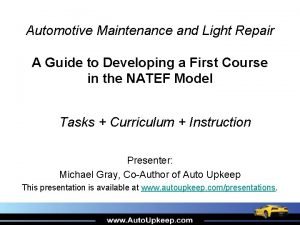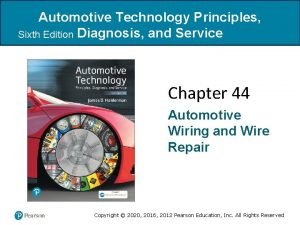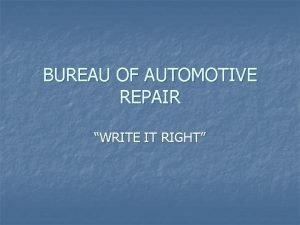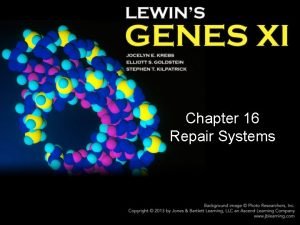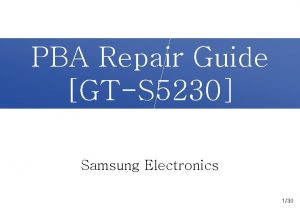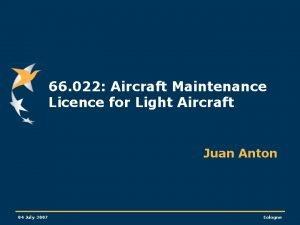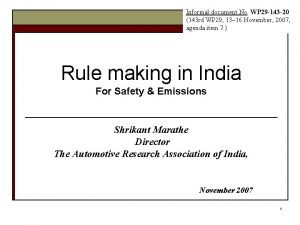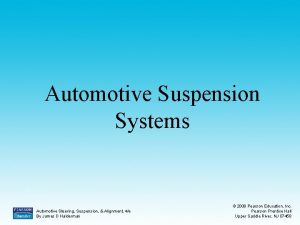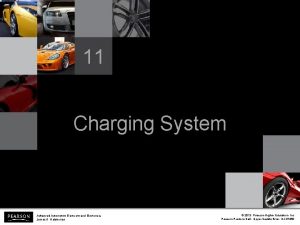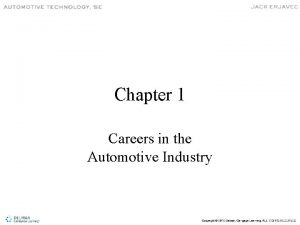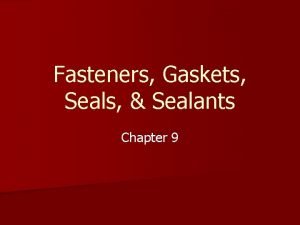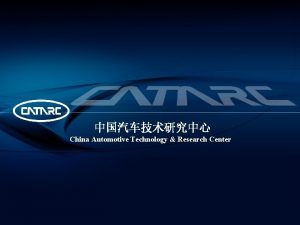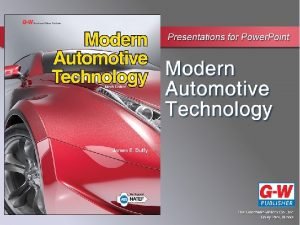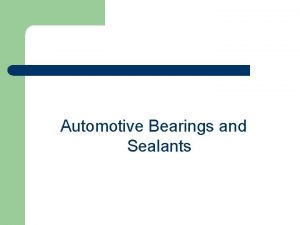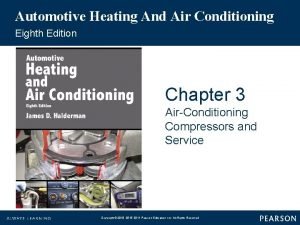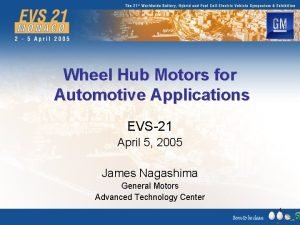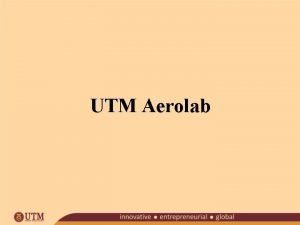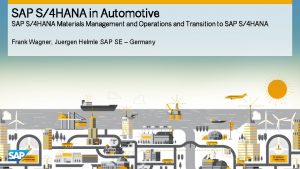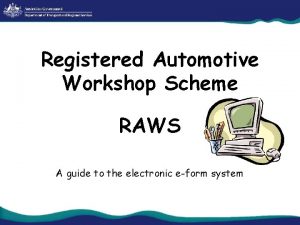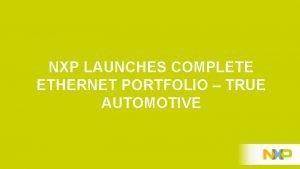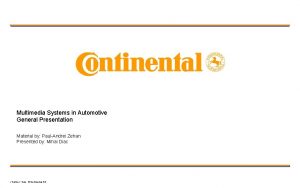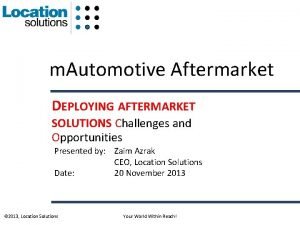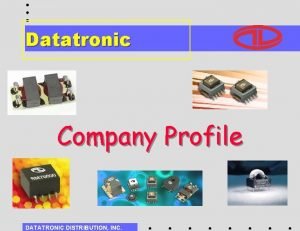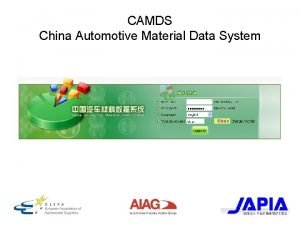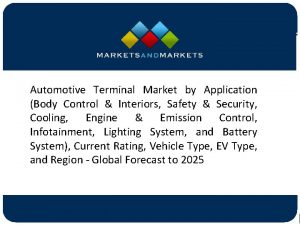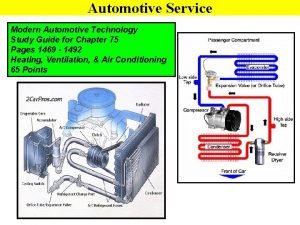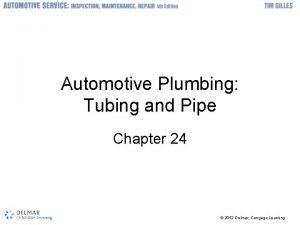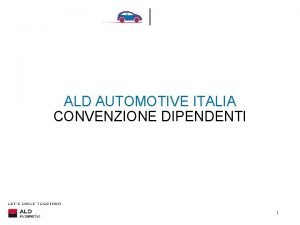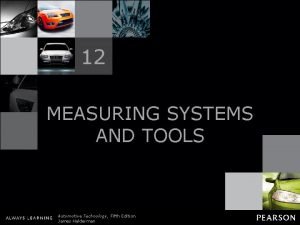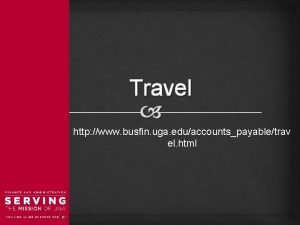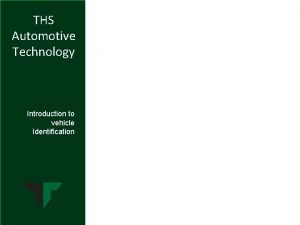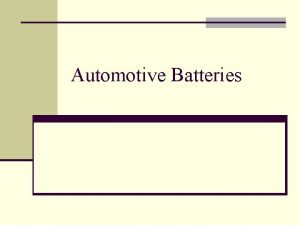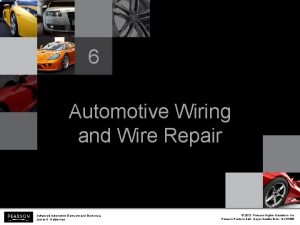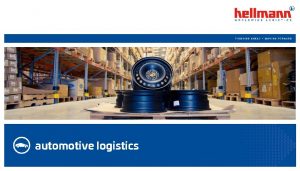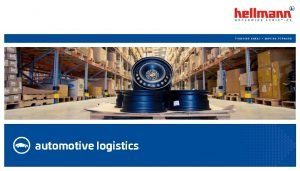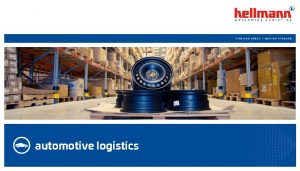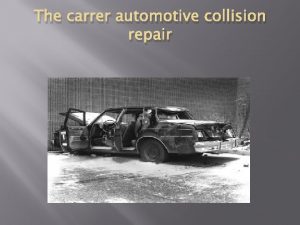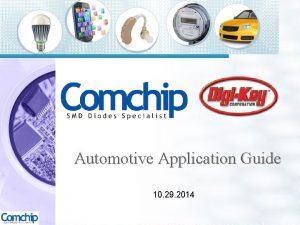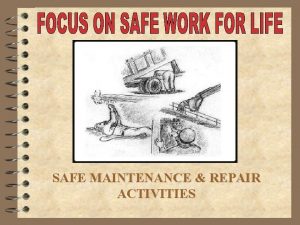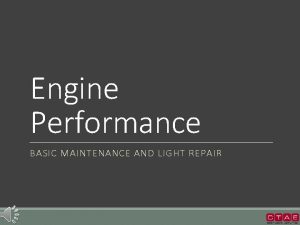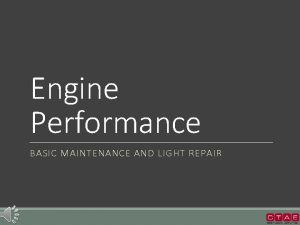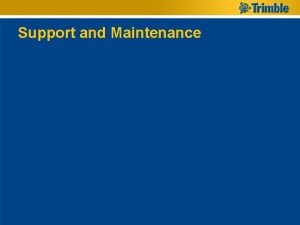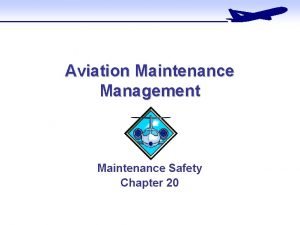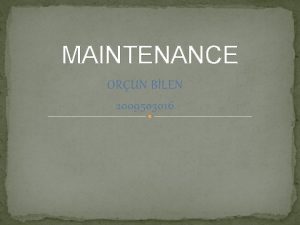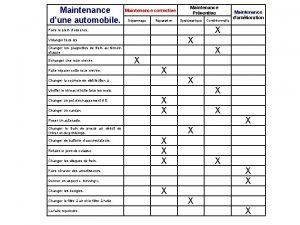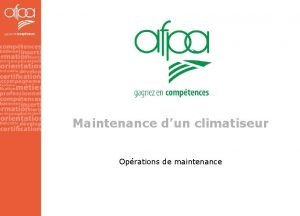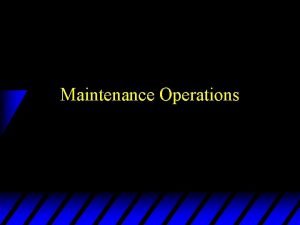Automotive Maintenance and Light Repair A Guide to










































- Slides: 42

Automotive Maintenance and Light Repair A Guide to Developing a First Course in the NATEF Model Tasks + Curriculum + Instruction Presenter: Michael Gray, Co-Author of Auto Upkeep This presentation is available at www. autoupkeep. com/presentations.

Download this Presentation

Essential Questions • What is the NATEF model? • How do “Gen Z” students learn? • Why is it necessary to teach maintenance and light repair? • How does an “Intro to Auto” course fit within a complete Automotive Service Technology Training Program? • What are the essential units in an entry level course? • What will each student know and be able to do at the completion an entry level course?

The 2017 NATEF Model • History on the NATEF Model – Three Level Model since 2012 - Maintenance & Light Repair (MLR), Automobile Service Technology (AST), and Master Automobile Service Technology (MAST). Updated in 2017. Each successive level includes all the tasks of the previous level in addition to newly designated tasks. » Obtained from Page 1 - https: //www. asealliance. org/wp- content/uploads/2015/07/2017 -Auto-Program-Standards-Print-Version-1. pdf • You can download the standards at: » https: //www. asealliance. org/natef-accreditation/program-standards.

Tasks/Hours Required MAST – 439 tasks at 1200 hours (Includes MLR and AST) AST – 353 tasks at 840 hours (Includes MLR) MLR – 218 tasks at 540 hours

What is a Task? • “A task is a psychomotor or cognitive entry-level learning activity consisting of one or more measureable steps accomplished through an instructor presentation, demonstration, visualization or a student application. ” » Obtained from Page 59 https: //www. asealliance. org/wp-content/uploads/2015/07/2017 Auto-Program-Standards-Print-Version-1. pdf – It should be noted that each task is not dedicated an hour allotment…some tasks take longer than others.

NATEF Assumptions • “Individual courses of study will differ across automobile technician training programs” • “Development of appropriate learning delivery systems and tests which monitor student progress will be the responsibility of the individual training program” » Obtained from Page 60 https: //www. asealliance. org/wp-content/uploads/2015/07/2017 Auto-Program-Standards-Print-Version-1. pdf

NATEF Does Not Endorse Curriculum • “NATEF does not endorse specific curricular materials nor provide instruction. It does, however, set standards for the content of instruction, which includes tasks, tools and equipment, hours, and instructor qualifications. ” » Obtained from http: //www 1. natef. org/program. cfm

Basically… • NATEF provides the required tasks and hours, you provide the program course structure, curriculum, and student materials.

Curriculum Design Step 1 Identify Desired Results NATEF Tasks Step 2 Determine Acceptable Evidence ASE/End of Program Tests Step 3 Plan Learning Experiences and Instruction Curricular Materials and Learning Activities Adapted from Wiggins and Mc. Tighe - Understanding by Design framework.

Enduring Understandings Priority 3 Worth Being Familiar With NATEF Requirements Important to Know and Do P-2 Tasks 80% Priority 2 Enduring Understanding Priority 1 P-3 Tasks 50% P-1 Tasks 95% Central to discipline. Has long lasting value beyond the classroom. Students revisit these during their lifetime. Adapted from Wiggins and Mc. Tighe - Understanding by Design framework.

A Question to Think About… So how do you teach this new generation of students the fundamentals of Automotive Technology?

Generations are Defined by Life Experiences • Life experiences develop attitudes, beliefs, and sensitivities… – – Greatest (G. I. ) Generation – Great Depression, FDR’s New Deal Depression (aka Silent) Generation – WWII and Cold War Boomers – space race, civil rights movement, Vietnam, Watergate Gen Xers – fall of Berlin Wall, AIDS, Chernobyl, Challenger, World Wide Web – Millennials (aka Gen Y) – Facebook, Cell Phones, Instant/Text Messaging – but also remember a slow Internet. – Gen Z (aka Gen Now, i. Gen, Centennials, Gen C) – Post 9/11, they don’t know a time before computers. They are digital natives. » Sources http: //net. educause. edu/ir/library/pdf/erm 0342. pdf and http: //en. wikipedia. org/wiki/List_of_Generations

Information Age Mindset • Computers aren’t technology – they are an assumed part of life • Internet is a place for socialization • Doing is more important than knowing • Learning is more trial and error • Multitasking is a way of life • Staying connected is essential • Expect services/responses to be quick and available 24 x 7 » Source http: //net. educause. edu/ir/library/pdf/erm 0342. pdf

Today’s Students • • Experiential/hands-on learning Working in teams Social networking They expect immediate responses • Face-to-face learning (but have a low tolerance for boring) • Achievement-oriented • Value authenticity and stories » Source http: //www. brandonhallnews. com/28 oct 8. htm

What do most “Gen Z” students know about automobiles? • Discussion…

Uninformed Consumers https: //www. youtube. com/watch ? v=MWdm. D 1 j. F 8 aw https: //www. youtube. com/watch ? v=IOoo. YBJWBa 4 What happens when you don’t change the oil as required?

Automotive Statistics • 80% of vehicles need service, fluids, or replacement parts (Car Care Council, 2017) • 11. 6 years old is the average of cars and trucks in the USA Common Vehicle on the Road Today Is Over 11 Years Old Has 139, 000+ Miles Needs Service (IHS Markit, 2016) References: HIS Markit. (2016). Vehicles Getting Older: Average Age of Light Cars and Trucks in U. S. Rises Again in 2016 to 11. 6 Years, IHS Markit Says. [Press Release]. Retrieved from http: //news. ihsmarkit. com/press-release/automotive/vehicles-getting-older-average-light-cars-and-trucks-us-rises-again-201 Care Council. (2017). Community Care Events Show Most Vehicles Need Service. [Press release]. Retrieved from http: //media. carcare. org/2017 -07 -11 Community-Care-Events-Show-Most-Vehicles-Need-Service

The NEED Uninformed Consumers Current Automotive Statistics NATEF Model with MLR Tasks Students NEED a Starting Point An Essential Foundation with “Enduring Understandings”

So You Need a First Course… • • What will your first course look like? How will it feed your advanced programs? How could it serve a community need? How can you generate more informed consumers AND increase the number of highlyqualified technicians? • How can you serve both populations at the same time?

What does your first course look like now? • Discussion…

Attracting Non-Traditional Students • Defined: – What is a Non Traditional Student? • “A non-traditional student would be any male or female that is enrolled in a program of study where the opposite gender accounts for more than 75%, such as a male student enrolled in Health and Human Services or a female in Automotive Technology. ” » Obtained from http: //www. gptc. edu/content. cfm? Page. Code=other_non_traditional

The Case for Non-Traditional Students… • Careers should be based on abilities and interests, not gender stereotypes. • Men and women spend more than 30 years in the workplace and why not enjoy it? • Women can earn up to 30% more working in nontraditional jobs. • Nontraditional students can learn new ways of thinking and dealing with others. • Less than one-third of new occupations require a four-year degree. » Obtained from http: //www. hawaii. edu/cte/publications/nontrad 1. pdf

How do you attract non-traditional students into your program? • Discussion…

How can an Intro course be rigorous? • Well, it’s already relevant – all drivers should know how cars work. • MLR/Entry Level Programs are Rigorous – They Require Students to: – Learn in the Cognitive (knowledge), Affective (attitudes), and Psychomotor (skills) domains. – Think and work. – Apply knowledge across disciplines. – Apply knowledge to real-world predictable situations (e. g. , change oil, rotate tires, check tire pressure, periodic inspections, check fluid levels). – Apply knowledge they learned to real-world unpredictable situations (e. g. , burned out headlight, dead battery, flat tire, burst radiator hose, car stuck) – remember that uniformed consumer!

Being Relevant Matters • A NATEF publication on English, Math and Science integration with automotive technology at the MLR, AST, and/or MAST program accreditation level. – Can be downloaded at http: //www. natef. org/Achieving. Accreditation/Integrated-Academic-Skills/Automobile. aspx

Rigor/Relevance Framework Evaluation K N O W L E D G E Assimilation Adaptation Acquisition Application Synthesis Analysis Application Comprehension Knowledge/ Awareness in e ss n e i o n g r e y li s ed cip pl plin Ac ine l p y i w l A c o Dis pl cip s n i p K ne D A is D O Adapted from International Center for Leadership in Education a Re l to y rld ble l p o a Ap W dict ions t e Pr itua S APPLICATION l a Re e to y rld abl l p o t Ap W edic ions pr uat n U Sit

MLR Example • It is difficult to generalize, since every secondary and post-secondary school approaches this uniquely. – But if MLR requires 540 hours, then… • It takes a minimum of 4 credits in a traditional secondary school system to complete (540 hours/135 hours = 4). – 90 minute block x 90 days = 8100 minutes or 135 hours Or – 45 minute periods x 180 days = 8100 minutes or 135 hours • It takes a minimum of 20 credits/units in a traditional postsecondary system to complete depending how units are allocated (e. g. , if a unit = 27 hours of instruction/lab, then 540 hours/27 hours = 20 units).

How do you organize courses in your program? • Discussion…

How Auto Upkeep fits All Students Auto Upkeep Curriculum 135 Hours meets 60% of MLR Tasks + Consumer Oriented Tasks Students Not Entering Automotive Field NATEF MLR Program 540 Hours of Instruction 218 Tasks NATEF AST Program 840 Hours of Instruction 353 Tasks (Includes MLR) NATEF MAST Program 1200 Hours of Instruction 439 Tasks (Includes MLR and AST) More Informed Consumer Entry Level Technician Automotive Technician

What is Auto Upkeep? • Was developed because most texts are either too complex 1500+ pages or too simple to teach an Introduction to Automotive course.

Think of it this way… 1500+ Pages = Comprehensive Automotive Technology Textbook Includes a lot of “Worth Being Familiar With” Information Best Suited for MAST Programs Auto Upkeep = 288 Pages = Best Suited for MLR/Intro Programs Information Central to Discipline, Long Lasting Value Beyond the Classroom

What’s special about Auto Upkeep? • • • Short, concise chapters 12 point font – Easy-to-Read 3 Levels of Headings When Necessary A figure, picture, or graph accompanies almost every block of text Helpful emphasis blocks – Tech Tips, Price Guides, Web Links, Servicing, Trouble Guides, Activities, Q & A’s, Career Paths, Calculations Videos, Apps, and QR Codes to Extend Learn Online Reviewed by young adults and technical reviewers Extensive effort was put on book layout Hands-on and Internet-based activities (40 activities in all)

What are the Auto Upkeep units? 1. Introduction and How Cars Work 2. Buying an Automobile 3. Automotive Expenses 4. Repair Facilities 5. Safety Around the Automobile 6. Tools and Equipment 7. Auto Care and Cleaning 8. Fluid Level Check 9. Electrical System 10. Lubrication System 11. Fuel System 12. Cooling System and Climate Control 13. Ignition System 14. Suspension, Steering, and Tires 15. Braking System 16. Drivetrain 17. Exhaust and Emission System 18. Alternative Fuels and Designs 19. Automotive Accessories 20. Common Problems and Roadside Emergencies * 40 hands-on and internet-based activities engage the students

How is the Auto Upkeep commonly delivered? • Most often offered as a 1 credit course, but also used by some school districts as a ½ credit course. • Some community colleges and universities use it as a first auto course or as an evening adult education course. • Auto Upkeep was designed to have a balance between in-class and hands-on instruction. – Commonly two days a week are in-class and three days a week are in the automotive lab.

What will each student know and be able to do at the completion of Auto Upkeep? • 200 competencies are assessed. • Over 60% of MLR Tasks are addressed. • In general, students become confident, empowered consumers and users of the automobile. Plus, Auto Upkeep builds a solid foundation for future courses. • Let’s look at the complete competency profile and the NATEF MLR Matrix. » http: //www. autoupkeep. com/standards/

Instructor USB – Turn Key Curriculum or Modify it as YOU Want • • Sample Course Syllabus Outline Power. Points Competency Profile MLR Correlation Matrix Tests and Exams Lab Activities Study Questions Answer Keys

Integrates Online Material Throughout • • QR Codes App Links Video Links Check out the “Chapter Resources” tab at www. Auto. Upkeep. com

Who’s using Auto Upkeep? • Over 500 secondary and post-secondary schools throughout the United States and Canada • Large schools in Texas to small schools in Wisconsin • NATEF and Non. NATEF Schools • Over 100, 000 copies sold sinception • Now in the 4 th Edition

To Get Free e. Book Access Sign-Up on the Sign-In Sheet and I will email you an e. Book access code.

Questions?

Contact Information Michael Gray Rolling Hills Publishing 800 -918 -READ www. Rolling. Hills. Publishing. com www. Auto. Upkeep. com Email: info@autoupkeep. com Linked. In – www. Linked. In. com/in/Michael. EGray Twitter – www. Twitter. com/Auto. Upkeep Videos – www. Video. Auto. Upkeep. com You. Tube – www. You. Tube. com/Auto. Upkeep Facebook – www. Facebook. com/Auto. Upkeep
 Automotive maintenance and light repair answer key
Automotive maintenance and light repair answer key Chapter 44 automotive wiring and wire repair
Chapter 44 automotive wiring and wire repair Write it right bureau of automotive repair
Write it right bureau of automotive repair Nucleotide excision repair
Nucleotide excision repair Rec a
Rec a Light light light chapter 23
Light light light chapter 23 Into the light chapter 22
Into the light chapter 22 Chapter 22
Chapter 22 Repair guide
Repair guide Light aircraft maintenance
Light aircraft maintenance Put out the light, and then put out the light
Put out the light, and then put out the light Difference between light dependent and light independent
Difference between light dependent and light independent Or the bending of light and the bouncing off of light
Or the bending of light and the bouncing off of light Automotive regulations and standards
Automotive regulations and standards Automotive technology sixth edition
Automotive technology sixth edition 4e alignment
4e alignment Advanced automotive electronics
Advanced automotive electronics Chapter 2 automotive careers and ase certification
Chapter 2 automotive careers and ase certification Fasteners gaskets seals and sealants
Fasteners gaskets seals and sealants China automotive technology and research center
China automotive technology and research center Automotive fasteners gaskets and sealants
Automotive fasteners gaskets and sealants Automotive bearings and seals
Automotive bearings and seals Automotive heating and air conditioning 8th edition
Automotive heating and air conditioning 8th edition Junyuchu
Junyuchu Materials that do not block light
Materials that do not block light Wheel hub motors for automotive applications
Wheel hub motors for automotive applications Utm automotive engineering
Utm automotive engineering Sap hana for automotive
Sap hana for automotive Dotars raws
Dotars raws True automotive
True automotive V cycle automotive
V cycle automotive Automotive aftermarket solutions
Automotive aftermarket solutions Fishbone diagram for poor customer service
Fishbone diagram for poor customer service Datatronic automotive
Datatronic automotive Camds system
Camds system Automotive terminal market
Automotive terminal market Modern automotive technology answer key
Modern automotive technology answer key Automotive plumbing
Automotive plumbing V cycle automotive
V cycle automotive Ald automotive permuta
Ald automotive permuta Measuring tools in automotive
Measuring tools in automotive Uga per diem
Uga per diem Ths automotive
Ths automotive
